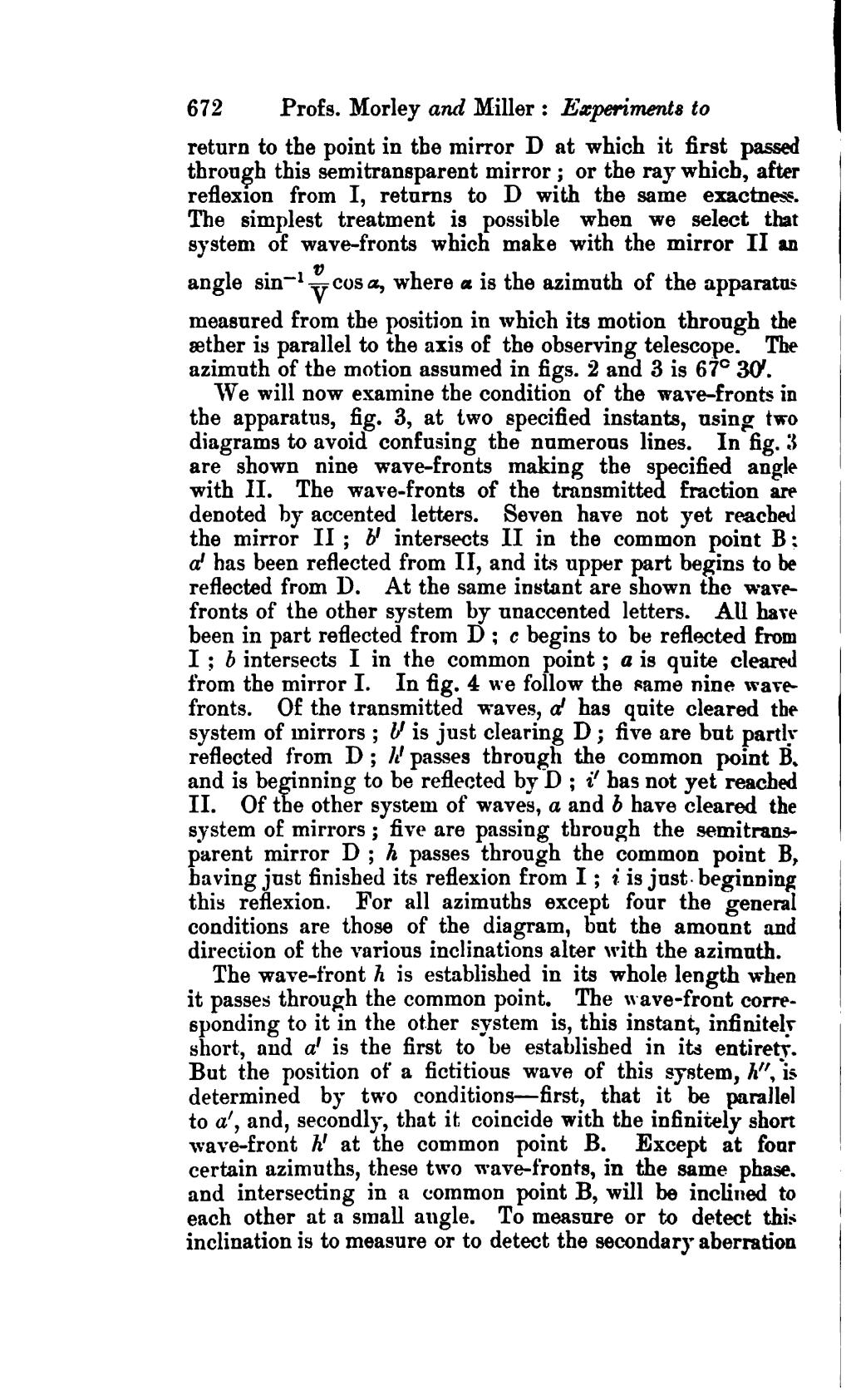return to the point in the mirror D at which it first passed through this semitransparent mirror; or the ray which, after reflexion from I, returns to D with the same exactness. The simplest treatment is possible when we select that system of wave-fronts which make with the mirror II an angle , where α is the azimuth of the apparatus measured from the position in which its motion through the æther is parallel to the axis of the observing telescope. The azimuth of the motion assumed in figs. 2 and 3 is 67° 30'.
We will now examine the condition of the wave-fronts in the apparatus, fig. 3, at two specified instants, using two diagrams to avoid confusing the numerous lines. In fig. 3 are shown nine wave-fronts making the specified angle with II. The wave-fronts of the transmitted fraction are denoted by accented letters. Seven have not yet reached the mirror II; b' intersects II in the common point B; a' has been reflected from II, and its upper part begins to he reflected from D. At the same instant are shown the wave-fronts of the other system by unaccented letters. All have been in part reflected from D; c begins to be reflected from I; b intersects I in the common point; a is quite cleared from the mirror I. 
Fig. 4.In fig. 4 we follow the same nine wave-fronts. Of the transmitted waves, a' has quite cleared the system of mirrors; b' is just clearing D; five are but partly reflected from D; h' passes through the common point B, and is beginning to be reflected by D; i' has not yet reached II. Of the other system of waves, a and b have cleared the system of mirrors; five are passing through the semitransparent mirror D; h passes through the common point B, having just finished its reflexion from I; i is just beginning this reflexion. For all azimuths except four the general conditions are those of the diagram, but the amount and direction of the various inclinations alter with the azimuth.
The wave-front h is established in its whole length when it passes through the common point. The wave-front corresponding to it in the other system is, this instant, infinitely short, and a' is the first to be established in its entirety. But the position of a fictitious wave of this system, h", is determined by two conditions—first, that it be parallel to a', and, secondly, that it coincide with the infinitely short wave-front h' at the common point B. Except at four certain azimuths, these two wave-fronts, in the same phase, and intersecting in a common point B, will be inclined to each other at a small angle. To measure or to detect this inclination is to measure or to detect the secondary aberration


